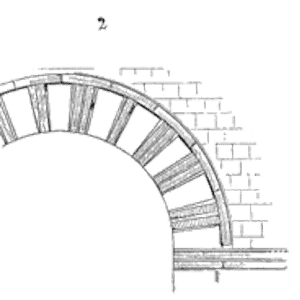
More Than One Root Cause
Abstract
Carl and Fred discussing the subject of root cause. How many “root causes” can there be? Is there only one “root cause” for a problem? What about events or conditions that happen in tandem?
Key Points
Join Carl and Fred as they discuss how many events or conditions can contribute to problems, and whether there can be more than one “root cause.”
Topics include:
- Independent vs tandem causes
- Sequential vs parallel events
- Technical vs business processes
- Digging deeper to get to root cause; five whys
- Business FMEA
- What about interfaces?
Enjoy an episode of Speaking of Reliability. Where you can join friends as they discuss reliability topics. Join us as we discuss topics ranging from design for reliability techniques to field data analysis approaches.

Show Notes
 Ask a question or send along a comment.
Please login to view and use the contact form.
Ask a question or send along a comment.
Please login to view and use the contact form.
I don’t think either of you made a good argument for multiple causes for a failure. Fred had a point that an FMEA can document many potential causes for a particular failure mode. However, for a specific physical failure, there is one dominant cause.
An example I experienced was a leak failure in an actuator. We found that there was a crack in one lot of drawn parts. The root cause was an error in the tooling set up. Even after parts were sorted, we still had leak failures. The cause for the remaining leak failures was assembly damage to the o-ring. Same product, same time, same failure mode, but depending on the specific part, different causes.
An element of problem resolution that isn’t often emphasized or is conflated is that finding the root cause is separate from actually fixing the problem. In Fred’s crystal example where there was the crack caused by mechanical overstress from getting dropped, you could decide to beef up the joint, package the component to mitigate such stresses, or, even, choose to do nothing because it’s just not that serious of an issue. I’m sure there are more possible fixes.
I’m not a fan of the 5-why root cause analysis method. Too many of the ones I’ve seen are really just documents that are not too different from Fred’s riff on possible causes for your air conditioner unit vibration. Lots of reasonable sounding ideas, but a dearth of substantive evidence.
That said, the concept of the 3-legged 5-why is really valuable. First, find the physical root cause, then the root cause for not detecting the physical root cause, and, finally, determining what in the system makes possible for the physical and detection causes to exist.
In that sense, there are multiple causes for a specific failure. If we’re talking about physics of failure, there is only one root cause (which may be an interaction).
Hello Keith. I appreciate your comments. They are a valuable contribution to the conversation and are always welcome.
Apparently, my story of the AC condenser noise problem was not as clear as it could be. Let me try to explain in better detail.
Observation: the outside AC condenser system is making noise when the system is activated and running.
Background: The AC condenser system is made up of a compressor, cooling fins / tubes, fan, shroud and a few other components.
Analysis: There are two contributors to the noise issue: 1) the fan subassembly was slightly out of balance, and 2) the bracket attachment between the compressor and fan subassembly and the shroud was not tightened sufficiently, thus allowing the rattle. Both of these problems (1 and 2) were present in this scenario and contributed in tandem to the noise problem. There would have been no noise if either of the issues were not present. It was like a classical AND gate in a Fault Tree Analysis.
My Point: The point I was trying to make is there are sometimes more than one contributor to a system problem that are necessary, and occur in *tandem*, to bring about an issue. FMEAs can miss this tandem aspect, as they typically consider causes independently.
I agree that at the physical level there is usually a dominant cause. For example, in the AC Condenser scenario, if we were examining the physical problem related to the loose bracket fastener, there could be multiple causes (such as missing locking feature in the screw design, or wrong tightening specification, etc.) However, one of these will be more likely than the others.
Hope that helps to explain my rationale. And, thanks again for your contribution to the discussion.
Carl
Thanks for the clarification. I may not have been listening closely enough to the explanation of the out-of-balance fan plus the loose assembly.
I’m left to wonder whether we’re talking about a manufacturing or a design issue here. When your particular A/C unit rolled off the end of the line, was it compliant with the design?
This is hard to know without seeing the drawings and the production data.